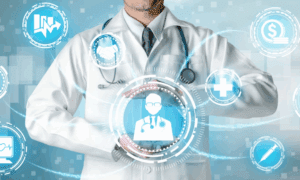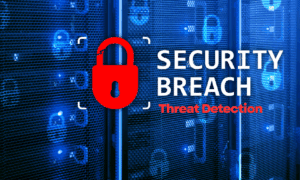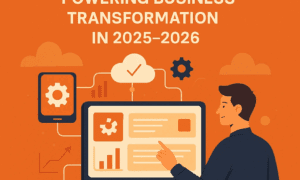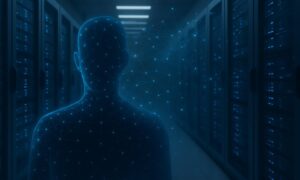Growth of digitalization and rising utilization of advanced technologies to aid the conventional practices in healthcare and biomedical industries have given a rise to various path breaking trends and innovations in healthcare industry in 2021. Increasing need for remote healthcare monitoring and management applications was severely underlined during the testing times created by the COVID-19 pandemic. Emergence of futuristic technologies that can effectively fast track various administrative, managerial, financial, diagnostic, and therapeutic tasks is propelling the growth of various parallel industries, working under the larger umbrella of the global healthcare industries.
Following are the top 10 healthcare industry trends and innovations in 2021 that may foster the growth in the global market. Each trend and innovation is fuelled by the increasing demands for digitalization and reduction in cost intensive nature of the complex healthcare practices.
1. Increasing Usage of Medical Artificial Intelligence (AI)
Various tedious and time consuming manual tasks can be automated and stream lined by using technologies in artificial intelligence (AI) for healthcare market. AI technologies provide real time, rapid, and remotely accessible solutions for various disease prevention, diagnosis, and treatment problems in the healthcare industry. Managerial and administrative applications of AI technologies in healthcare can aid hospitals, clinics, surgical centers, and other healthcare facilities to enhance their medical diagnostics and clinical workflow management.
2. New Applications in Mobile Health (mHealth) Industry
mHealth platforms and technologies can offer access to personalized medical information using various connected devices such as wearable medical devices and digital solutions. mHealth platforms were found extremely helpful and reliable during the COVID-19 pandemic to stop the spreading of the virus through contact tracing, quarantine control and management, disseminating important information, surveillance, and testing and immunization assistance.
3. Integration of Internet of Medical Things (IoMT)
IoMT or Internet of Medical Things is pivotal technology that can be harnessed to establish healthcare systems or develop medical equipment that requires little to no human oversight. A massive network of inter-connected medical devices, infrastructure, and equipment can allow healthcare stakeholders and professionals to enable numerous applications such as smart medical diagnosis, remote patient management, automatic processing, real time bio-tracking, automatic disinfection, and disease control, to name a few.
4. Rising Adoption of 3D Printing
3D printing has been making strides in healthcare industry by enabling a higher degree of control over personalized medicine. It can be utilized to design and produce non-organic personalized medical solutions such as casts for fractures, prescription eyewear, surgical tools, prosthetics, and organic or biological solutions such as patient-specific organ models using 3D printing compatible biomaterials.
5. Enhanced Telemedicine Solutions
The global pandemic situation created by the outbreak of novel coronavirus in late 2019 has fast tracked the adoption of various telemedicine solutions in the past year. Numerous governments, clinics, healthcare systems, patients, and clinicians have adopted enhanced telemedicine solutions to decongest and reduce the burden faced by healthcare facilities around the world. Telemedicine solutions are extremely helpful in situations like these, as they can aid the elderly population remotely, help in conserving clinical and medical supplies, and frees up the bed space for patients that need immediate and over the top, direct medical attention. Telemedicine has been a great tool for patient relief during the pandemic situation by enabling patients and healthcare practitioners to practice social distancing.
6. Integration of Blockchain Technologies
Traceable, safe, reliable, and secure nature of the emerging blockchain technologies have made them suitable for various applications in global healthcare industry such as remote patient monitoring, health insurance claims, electronic medical record management, and monitoring and management of pharmaceutical supply chain. These technologies also play a significant role in drafting smart contracts, enable safe storage, retrieval, and sharing of the remotely collected biomedical and healthcare data, and battling counterfeit drugs and medications.
7. Collection and Analysis of Big Data
Emergence of Electronic Health Records (EHR) and Electronic Medical Records (EMR) have resulted in generation of massive amounts of digital data over the past few years. Solutions from the big data and big data analytics industries can help healthcare facilities and practitioners in medical data collection, diagnostic techniques, enhancing surgical workflows, enabling consultations, implement safe and secure data storage, streamline treatment planning, and assist in remote patient monitoring. With ever growing volume of the medical and healthcare data, need for sophisticated and technologically superior analysis tools is skyrocketing. Latest big data analytics can provide solutions and tools to tackle this massive, unstructured data, provide better options for treatment methods, and monitor healthcare facilities.
8. Cloud Computing
Cloud computing in healthcare industry presents the possibility of seamless integration of networks, billing, alerts, security, and monitoring systems in a healthcare facility. Cloud computing technologies can harness the processing power and enhanced storage capacities to accommodate big data and big data analytics solutions. These technologies are proven extremely valuable in tackling issues related to data access, data backup, smart data potential, data storage, data recovery, data interoperability, and data management.
9. Introduction of Immersive Technologies
Immersive technologies, such as augmented reality (AR), virtual reality (VR), and mixed reality (MR) are slowly gaining importance in the healthcare industry. New applications for VR technologies can assist in various forms of medical rehabilitation therapies including physical and cognitive rehabilitation and exposure therapies targeted at anxiety disorders. Simulations created through AR or VR technologies also play a significant role in the modern age medical education. These technologies can be effectively used to teach medical students regarding surgical procedures, internal organs in human body, and diagnostics.
10. Rising Focus on Developing the Field of Genomics
Advancements in the field of genomics i.e. the study of genomes, have given rise to increasingly advanced applications that provide innovative gene-based therapy solutions for various chronic ailments and disorders. Innovations in genomics has also propelled the development of the personalized gene-based



































